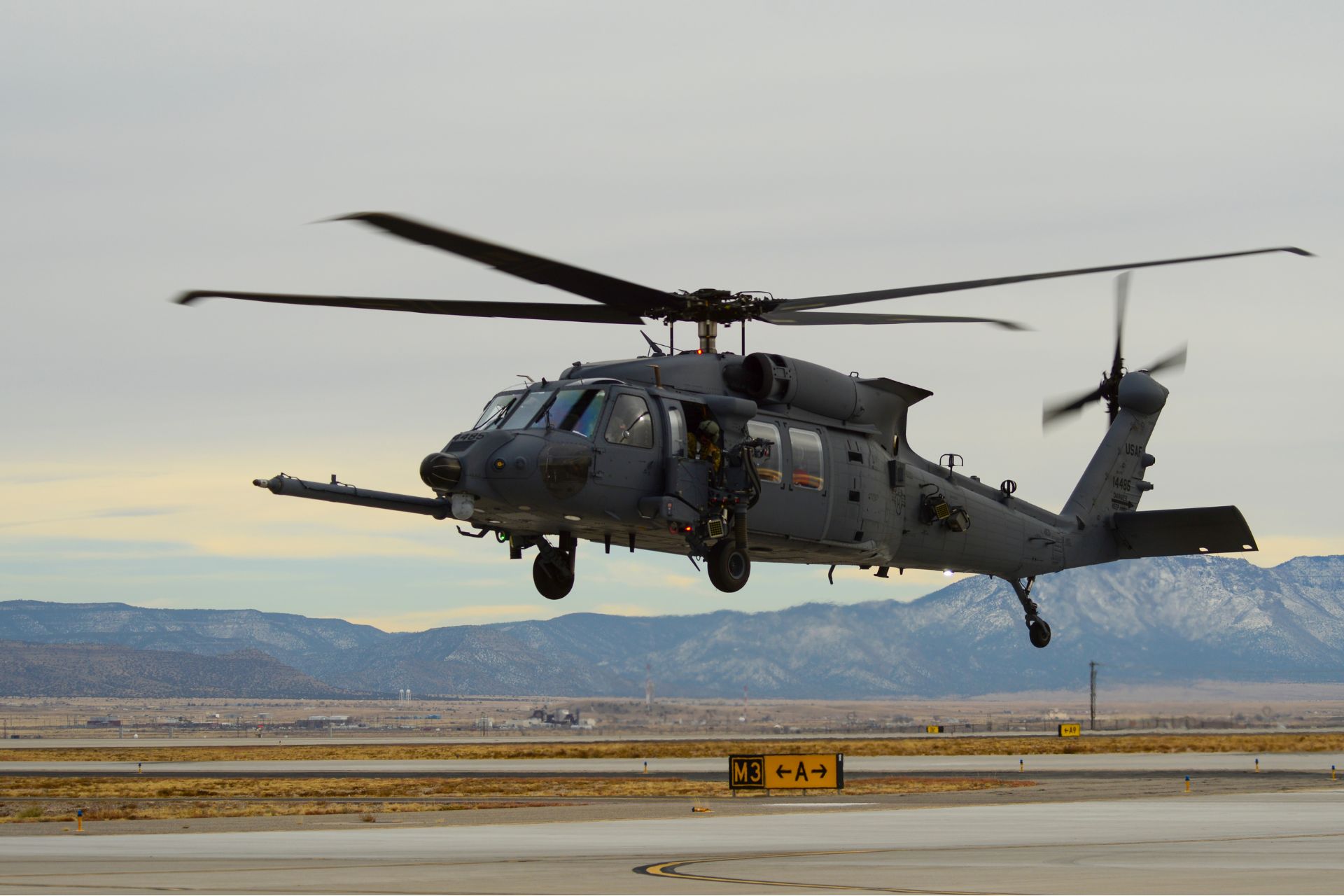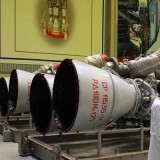Arrival of HH-60W Jolly Green II Helicopter Marks a Turning Point For US Air Force in Europe

{loadposition bannertop}
{loadposition sidebarpub}
Aviano Air Base in Italy recently unveiled two new HH-60W Jolly Green II helicopters, advanced combat rescue aircraft designed to replace the aging HH-60G Pave Hawk fleet, as reported by Stars and Stripes on January 13, 2025. During an official ceremony on January 10, 2025, airmen from the 31st Fighter Wing had the opportunity to examine the new helicopters, which reflect the U.S. Air Force’s commitment to modernizing its operational capabilities in Europe. The first helicopter arrived at Aviano in December, with plans to expand the fleet to six aircraft by October.
Follow Army Recognition on Google News at this link
With an expanded rotor and a weight reduction of approximately 4,000 pounds compared to the HH-60G, this helicopter delivers enhanced performance, including increased power and payload capacity for transporting equipment, munitions, and personnel (Picture source: US DoD)
Lieutenant Colonel Theodore Rodgers, program integration division chief for the HH-60W within the 31st Fighter Wing, emphasized the strategic importance of the deployment. The Jolly Green II was specifically developed to meet the demands of complex and joint operational theaters such as those managed by the U.S. European Command (EUCOM). With an expanded rotor and a weight reduction of approximately 4,000 pounds compared to the HH-60G, this helicopter delivers enhanced performance, including increased power and payload capacity for transporting equipment, munitions, and personnel.
Built by Sikorsky, a subsidiary of Lockheed Martin, the HH-60W is based on the proven UH-60M Black Hawk platform and incorporates significant advancements. It features a suite of advanced systems aimed at improving safety and operational efficiency in contested environments. These include a digital radar warning receiver, missile, and hostile fire alerts, and integrated countermeasure systems such as chaff and flares. The cabin and cockpit are reinforced with armor, while advanced communication capabilities, such as the LINK 16 tactical data link network and Automatic Dependent Surveillance-Broadcast, enhance mission effectiveness, even in environments involving chemical, biological, radiological, or nuclear (CBRN) threats.
With a rotor diameter of 16.34 meters, a top speed of 282 km/h, and a range of 1,111 kilometers due to its air refueling capability, the HH-60W combines mobility and endurance. It is equipped with two 7.62 mm or two .50 caliber machine guns, providing effective defensive firepower for its crews and passengers in hostile areas. In addition to combat rescue missions, the helicopter is designed for humanitarian operations, medical evacuations, disaster response, and non-combatant evacuations, offering a versatile platform for a variety of scenarios.
The Jolly Green II carries a legacy name, honoring the HH-3E Jolly Green and HH-53 Super Jolly Green rescue helicopters known for their critical role during the Vietnam War. These aircraft and their crews set the standard for excellence in combat search and rescue operations that continues to guide the U.S. Air Force today.
During the ceremony, Brigadier General Tad Clark, commander of the 31st Fighter Wing, highlighted the helicopter’s role in addressing current operational challenges while preparing for future battlefield demands. Combining agility, resilience, and firepower, the HH-60W is designed to perform effectively in contested environments, providing a key capability for U.S. forces.
The arrival of the HH-60W Jolly Green II at Aviano Air Base holds significant strategic importance in the current geopolitical landscape. Centrally located in Europe, the base serves as a critical hub for EUCOM and NATO allies, particularly amid growing tensions with Russia and instability in parts of the Mediterranean. These helicopters enhance the ability to conduct combat rescues, evacuations, and crisis responses in hostile or contested areas, ensuring a rapid and effective reaction to critical situations. Their deployment strengthens the deterrence posture of U.S. forces in Europe and their capacity to support partners in emergencies or conflicts.

{loadposition bannertop}
{loadposition sidebarpub}
Aviano Air Base in Italy recently unveiled two new HH-60W Jolly Green II helicopters, advanced combat rescue aircraft designed to replace the aging HH-60G Pave Hawk fleet, as reported by Stars and Stripes on January 13, 2025. During an official ceremony on January 10, 2025, airmen from the 31st Fighter Wing had the opportunity to examine the new helicopters, which reflect the U.S. Air Force’s commitment to modernizing its operational capabilities in Europe. The first helicopter arrived at Aviano in December, with plans to expand the fleet to six aircraft by October.
With an expanded rotor and a weight reduction of approximately 4,000 pounds compared to the HH-60G, this helicopter delivers enhanced performance, including increased power and payload capacity for transporting equipment, munitions, and personnel (Picture source: US DoD)
Lieutenant Colonel Theodore Rodgers, program integration division chief for the HH-60W within the 31st Fighter Wing, emphasized the strategic importance of the deployment. The Jolly Green II was specifically developed to meet the demands of complex and joint operational theaters such as those managed by the U.S. European Command (EUCOM). With an expanded rotor and a weight reduction of approximately 4,000 pounds compared to the HH-60G, this helicopter delivers enhanced performance, including increased power and payload capacity for transporting equipment, munitions, and personnel.
Built by Sikorsky, a subsidiary of Lockheed Martin, the HH-60W is based on the proven UH-60M Black Hawk platform and incorporates significant advancements. It features a suite of advanced systems aimed at improving safety and operational efficiency in contested environments. These include a digital radar warning receiver, missile, and hostile fire alerts, and integrated countermeasure systems such as chaff and flares. The cabin and cockpit are reinforced with armor, while advanced communication capabilities, such as the LINK 16 tactical data link network and Automatic Dependent Surveillance-Broadcast, enhance mission effectiveness, even in environments involving chemical, biological, radiological, or nuclear (CBRN) threats.
With a rotor diameter of 16.34 meters, a top speed of 282 km/h, and a range of 1,111 kilometers due to its air refueling capability, the HH-60W combines mobility and endurance. It is equipped with two 7.62 mm or two .50 caliber machine guns, providing effective defensive firepower for its crews and passengers in hostile areas. In addition to combat rescue missions, the helicopter is designed for humanitarian operations, medical evacuations, disaster response, and non-combatant evacuations, offering a versatile platform for a variety of scenarios.
The Jolly Green II carries a legacy name, honoring the HH-3E Jolly Green and HH-53 Super Jolly Green rescue helicopters known for their critical role during the Vietnam War. These aircraft and their crews set the standard for excellence in combat search and rescue operations that continues to guide the U.S. Air Force today.
During the ceremony, Brigadier General Tad Clark, commander of the 31st Fighter Wing, highlighted the helicopter’s role in addressing current operational challenges while preparing for future battlefield demands. Combining agility, resilience, and firepower, the HH-60W is designed to perform effectively in contested environments, providing a key capability for U.S. forces.
The arrival of the HH-60W Jolly Green II at Aviano Air Base holds significant strategic importance in the current geopolitical landscape. Centrally located in Europe, the base serves as a critical hub for EUCOM and NATO allies, particularly amid growing tensions with Russia and instability in parts of the Mediterranean. These helicopters enhance the ability to conduct combat rescues, evacuations, and crisis responses in hostile or contested areas, ensuring a rapid and effective reaction to critical situations. Their deployment strengthens the deterrence posture of U.S. forces in Europe and their capacity to support partners in emergencies or conflicts.





